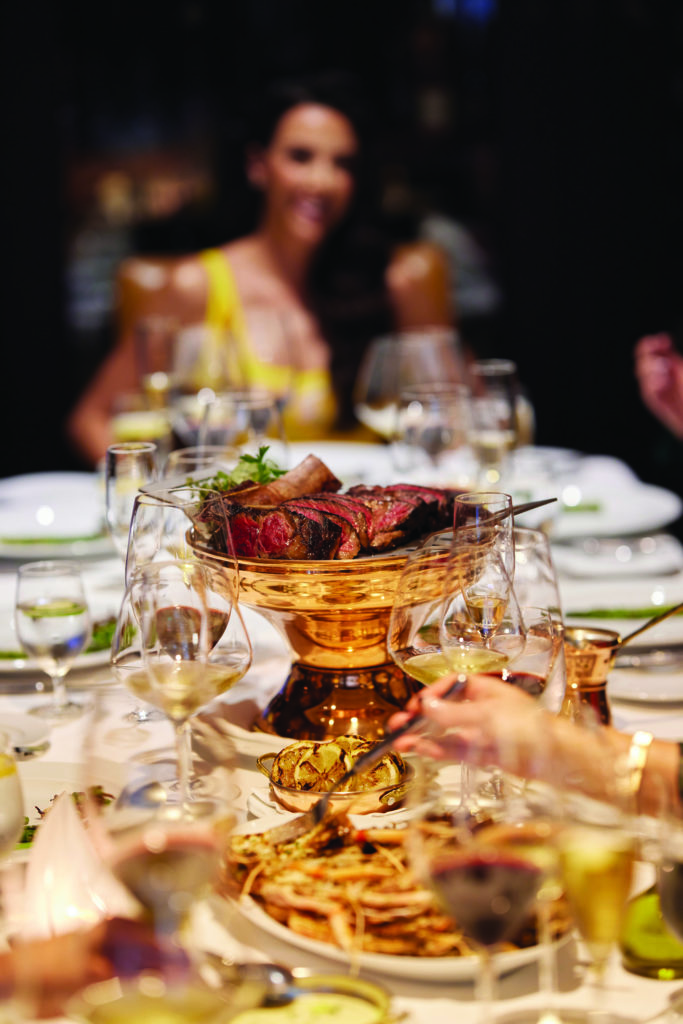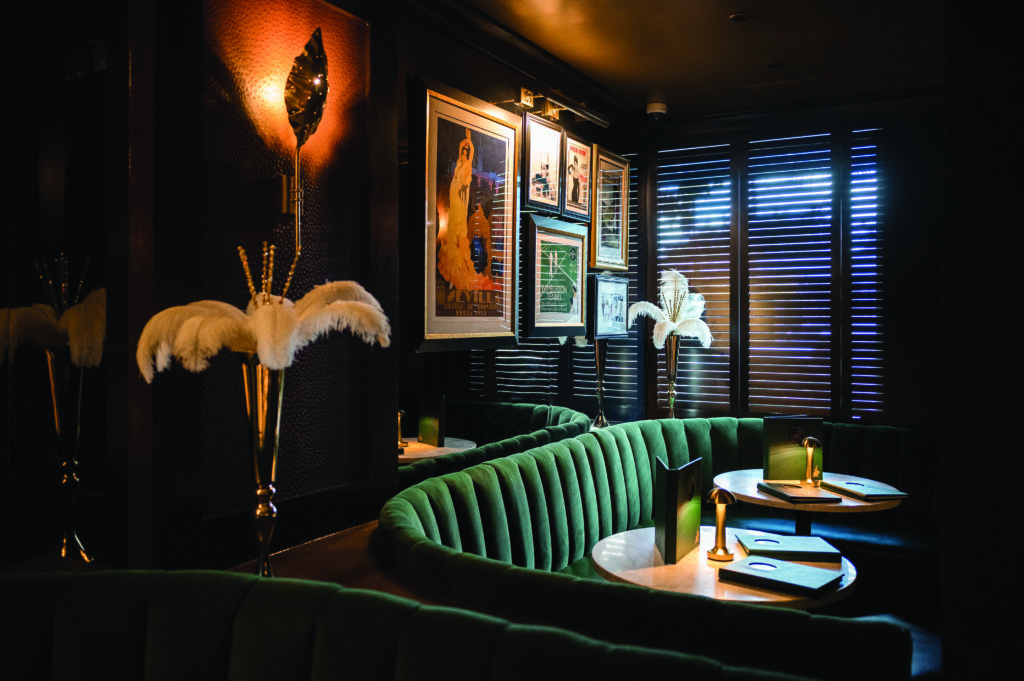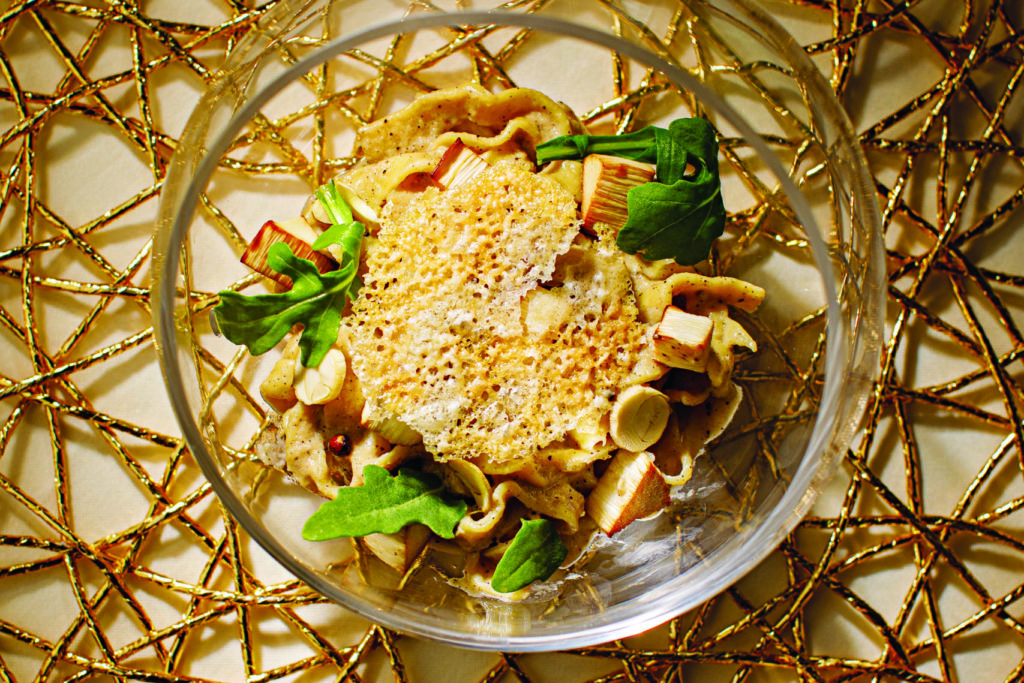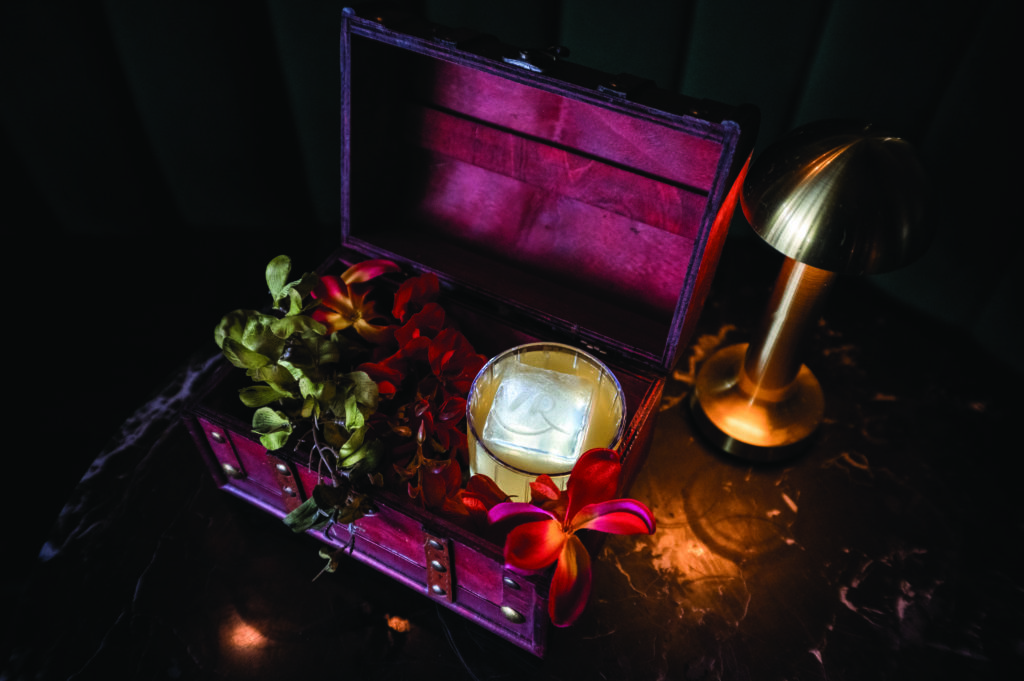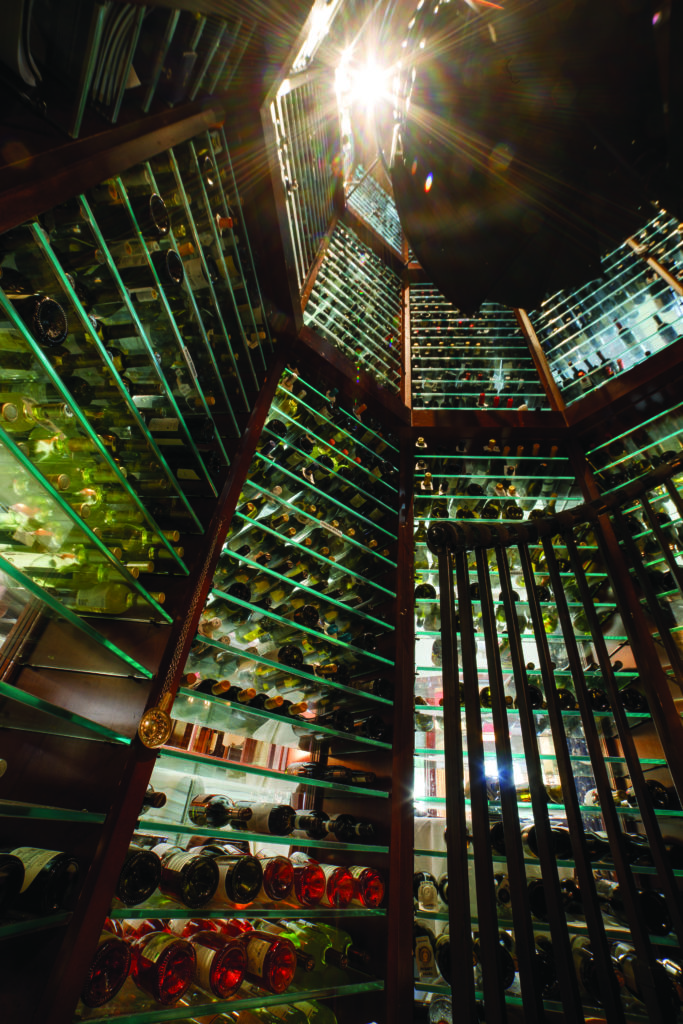The Oyster Society on Marco Island offers more varieties of oysters than most restaurants in the United States, with up to 24 at a time. And though sales often slow during the summer months, this year was different. “Even in September, oysters were selling because of the New Yorkers and others coming in from the Northeast,” says executive chef Chris DeGenova, who sources famous varieties like New Zealand Kaipara and French Belon. High-end products like caviar, king crab and lobster—items the restaurant has always offered but weren’t as sought-out before—are now among the most popular options on the menu.
Driving the demand for indulgent dining are residents who moved to Southwest Florida from major metropolises, bringing their refined palates with them. “The clientele is changing, and Floridians are finding new places within the state, like Marco Island, which is very elegant,” DeGenova explains. “They’re staying away from crowds in cities, like Miami, and coming here.”
At Sails Restaurant, one of downtown Naples’ finest establishments, one frequent diner who visits from Los Angeles recently commented, “Sails reminds me of the Polo Lounge at The Beverly Hills Hotel—only with much better food.” Outfitted in cognac leather chairs and banquettes, with a central bar crafted from hand-selected slabs of Greek marble, Sails is the result of owners Corinne Ryan’s and Veljko Pavicevic’s decades-long careers in the food and hospitality industries. (Pavicevic was formerly part of The Ritz-Carlton executive team.)
Last fall, the wine list featured highly allocated, hard-to-secure bottles of Sine Qua Non’s Midnight Oil Syrah ($2,900) and Atlantis Fe203 Syrah 1a ($2,000). A table of two ordered most of Sails’ reserves of the bottles for the year. The oyster and caviar tasting—a spruced-up spin on traditional caviar service—and the richly marbled Australian Tajima Wagyu bone-in rib-eye (topped with seasonal black truffles, of course) are favorites on the menu.
Service matches the level of cuisine: Divided into three tiers, servers must pass a series of exams proving their knowledge of food and wine before moving up to the captain position—held by hospitality pros who have worked in fine-dining hotspots across the globe. “When international travel was kiboshed even for those flying privately, guests sought us out for that Michelin-level experience they were missing in Europe,” Pavicevic explains. “Such guests spend more and dine with us more often, becoming regulars.”
Bob Boye, chef-owner of Liberty, also sees guests dining out more frequently at his 40-seat Fort Myers eatery, which offers à la carte and nightly tasting menus. Increasingly, diners are treating the experience like an omakase, giving Boye and his team free rein to design a progression of courses—and some are doing so on a weekly or monthly basis. (One regular recently came in for their 87th tasting menu.)
Diners often sample dishes like beef tartare with deviled egg pâté or octopus and bone marrow as part of a six-to-eight-course tasting, which includes wine pairings. At least one item on the menu changes nightly, and Boye incorporates alternative products that aren’t widespread in the region. Instead of purchasing short ribs, for example, he’s sourcing axis deer from Texas. As diners continue venturing out from their culinary norm, Boye says it’s pushing him and his team to innovate more in the kitchen, which he likens to “an artist’s workshop, where culinary creativity and experimentation thrive.”
A sense of artistry is also a central tenet at Hyde N Chic in Naples, where chef-owner Andy Hyde shifts to a tasting-menu-only format during season. The Ghana-born chef cut his teeth working with some of the gastronomic greats—Gordon Ramsay, Thomas Keller and Grant Achatz—before making his way to Naples and launching a catering company in 2016.
At Hyde N Chic, which opened in late 2019, many first-time guests have never had a tasting menu, Hyde says, and they’re excited to let the chef lead their experience. The frequently changing menu starts with a guest favorite—Aphrodisiacs from the Ocean, a decadent display of oysters, bluefin tuna tartare and nori tapioca cracker. During the fall, black Burgundy truffles were shaved over risotto or the fall vegetable terrine, and the meal ended with a decadent variation of Ghanaian chocolate.
Naples diners are also seeking lavish atmospheres. At The London Club in the Bellasera Resort, blue velvet draping leads into the dining room, where a well-heeled crowd sips martinis while listening to the evening’s jazz piano or multipiece band. “A restaurant is always more than just food; The London Club was designed to transport you to another place,” co-owner Peter Tierney, who drew inspiration from lounges in New York, Chicago and London, says. And, he notes, guests dress to the nines when they go there. “The people-watching is fantastic.” Also fantastical is the opulent ordering at some tables. “On a given night, the number of seafood towers going by is mind-blowing,” he says. “We have a caviar flight that’s become very popular.”
Metropolitan lounges also influenced the design of The Vine Room, which opened on Fifth Avenue South in November. Past the ivy-shrouded door, the lounge feels like a chic Hollywood hideaway with green velvet banquettes and a sleek bar where dapperly dressed bartenders pour cocktails with whimsical finishes like salted ocean foam or a single feather on the rim of an ice-cold Sazerac. The leather-bound menu features a page of ultra-premium cocktails, including a $65 negroni made with 40-year-aged Campari, while the small plates recall the Old World flair of bygone eras with selections like duck rillettes, caviar and a cheese trolley.
Last season, Campiello debuted The Club Room, an adjacent restaurant with nightly live music. It reopened in January with a new, tasting-menu format. Opulent dishes, like lobster with whipped sherry and tagliarini with robiola beurre blanc and osetra caviar, comprise the $150 four-course menu (with $100 optional wine pairings).
Sea Salt diners are increasingly opting for the chef’s table and dégustation menu, too, which features up to 13 courses. “They watch the artistry, in its most delicious sense, as our chefs prepare an exquisite menu just a few feet away,” general manager Tanya Buchanan says. The chef’s table also hosts truffle dinners—often by invitation only—pairing white truffles from Piedmont, Italy, with famed nebbiolo wines from the same region. “It’s one of the most expensive mushrooms in the world,” co-owner Ingrid Aielli says. “This year, we had pricing around $4,500 per pound—and customers are asking for it.”
Champagne sales have spiked at Sea Salt since the pandemic, too—just like they have at The Grill at The Ritz-Carlton, Naples, where diners pair the sparkling wines with dishes like foie gras with brioche, rhubarb chutney, foie gras emulsion and toasted hazelnut. On the way out (or while staying on property), guests may also snag a bottle or two from the Moët & Chandon vending machine.
Neapolitans often gravitate to The Continental, in the heart of Old Naples, for its romantic courtyard and the selection of premium steaks, like a filet of Tuscany’s renowned Chianina beef and Snake River Farms American Wagyu, which is a fixture at many Michelin-starred spots. The restaurant also debuted a dedicated truffle and caviar section on the lunch menu last fall, with items like cauliflower risotto with scallops and Italian black truffle and smoked trout with black-truffle vinaigrette. And, the team has beefed up its wine list to satisfy the demand for steakhouse-appropriate California cabernets and Bordeaux.
While Bordeaux are the top-selling wines at Naples’ Côte d’Azur, white Burgundies like Chablis, Montrachet and Pouilly Fuissé are also on the rise. “What’s shocking is that people are continuing to seek out a higher-tier wine on the list,” chef and co-owner James Waller says. Even customers without splurge-worthy budgets seem to be seeking small indulgences. “A lot of people come in just for foie gras and a profiterole,” Waller says.
Wine is certainly part of the draw at Angelina’s Ristorante in Bonita Springs, home to a Wine Spectator Best Award of Excellence selection of 4,000-plus bottles—70% of which are Italian—that is beautifully presented in the centerpiece, 30-foot-tall wine tower. With such an extensive cellar, wine director and sommelier Dinah Leach often encourages diners to discover lesser-known Italian varieties from regions like Campania to sip while tucked into one of the romantic, curtain-framed, chandelier-lit booths.
The experience, which starts with the wine and continues with straight-from-Italy ingredients, allows guests to feel pampered, manager Nick Kattman says. This notion of feeling taken care of correlates to the rising requests for dishes that require complex techniques or long preparation time, like handmade and stuffed pasta—items diners missed during the pandemic.
The Veranda, a Fort Myers institution since the late 1970s, is another spot where meticulous attention to detail and expertly executed cuisine are part of the equation. Housed in two turn-of-the-century homes, the restaurant makes you feel as if you’ve stepped back into another era. Dressing up is encouraged, and servers in bow ties still perform guéridon service, finishing dishes like Caesar salad tableside. On any given night, at least one table is celebrating a special occasion, indulging in the classic steakhouse and sophisticated Southern fare like chateaubriand, crab cakes and pecan-praline tarts. Even when they’re not celebrating, guests want to feel spoiled. Says owner Paul Peden, “They want the experience—especially at a place like The Veranda.”


